
Challenge
The available Building Information Modeling (BIM) applications in the AEC industry help create geometry and add meta-data. However, the files generated by this software are neither readable nor editable by any other application. Additionally, the metadata added to geometry lives as disconnected copies in several models. These issues lock AEC companies to particular software vendors, introduce inefficiencies within integrated multi-disciplinary design, and limit innovation in our design processes and data management.
Inspiration
As noted in the 2023 AEC Magazine article, “USD and the AEC industry”, the main issues with our current BIM workflows are that lead to data incompatibility. In turn, this facilitates a practice based on many different siloes and disparate standards. Looking ahead to BIM 2.0, the industry should seek to build and support a framework where granular streams of design data flow between users instead of sharing big, lumpy files.1 We can find inspiration in open formats, like Universal Scene Description (USD), developed by Pixar, the animation studio.
As the current paradigm focuses on objects with inherited data, even the current IFC (Industry Foundation Classes) is a file format. Instead, we should explore open data frameworks based on entities and components where data can move seamlessly across software and professionals.
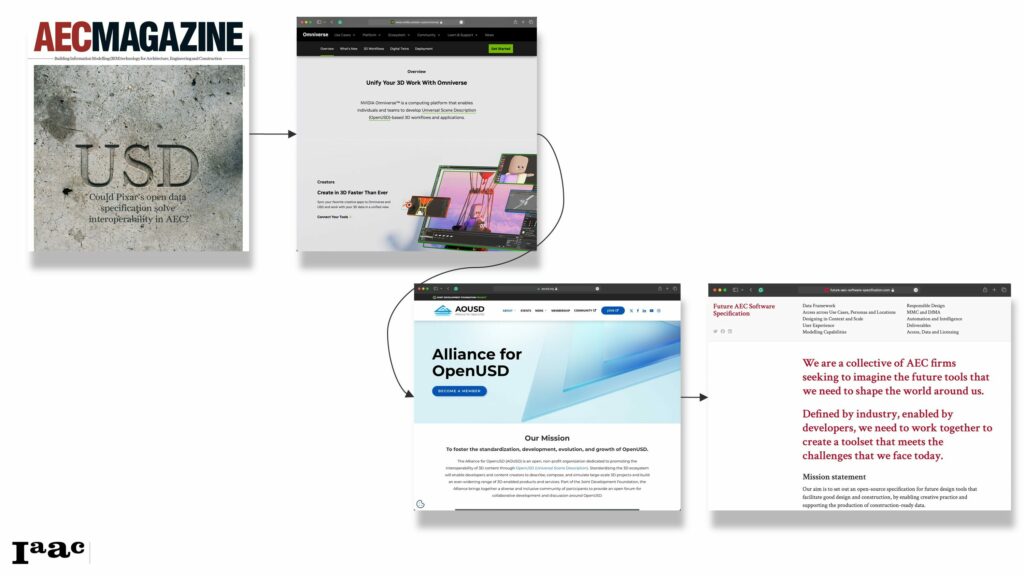
Proposal
The AEC industry can move from proprietary file formats to data frameworks by taking clues from media standards like Universal Scene Description (USD) and Entity Component Systems (ECS) programming. Even though it is still a file format, USD allows the interchange of geometry and data across different software with a non-destructive workflow. ECS differs from object-oriented programming (OOP), the current paradigm in AEC software, which separates objects from their properties (data), the latter being linked rather than copied.
Universal Scene Description: Make it easy to exchange complete scenes, geometry, materials, lights, etc to departments, allowing for simultaneous development and bypassing expertise siloes2
Entity-Component System: An architectural pattern often used in video game development. It facilitates code reusability by separating the data from the behaviour.3
In fact, recently, NVIDIA has adopted an open USD format and developed its Omniverse, a design collaboration and simulation platform focused on AEC and the manufacturing sector. Since then, large companies such as Pixar, Adobe, Autodesk, and Nvidia have placed their bets on open data frameworks, creating the Alliance for Open USD, a clear indicator of the importance and relevance of this topic. The challenge here is how these efforts do or do not relate to similar efforts in IFC5 and StrangeMatter, an idea developed by Greg Scheulsner, Director of Design Technology at HOK. It remains to be seen if this alliance can draft a specification standard that impacts the AEC industry.
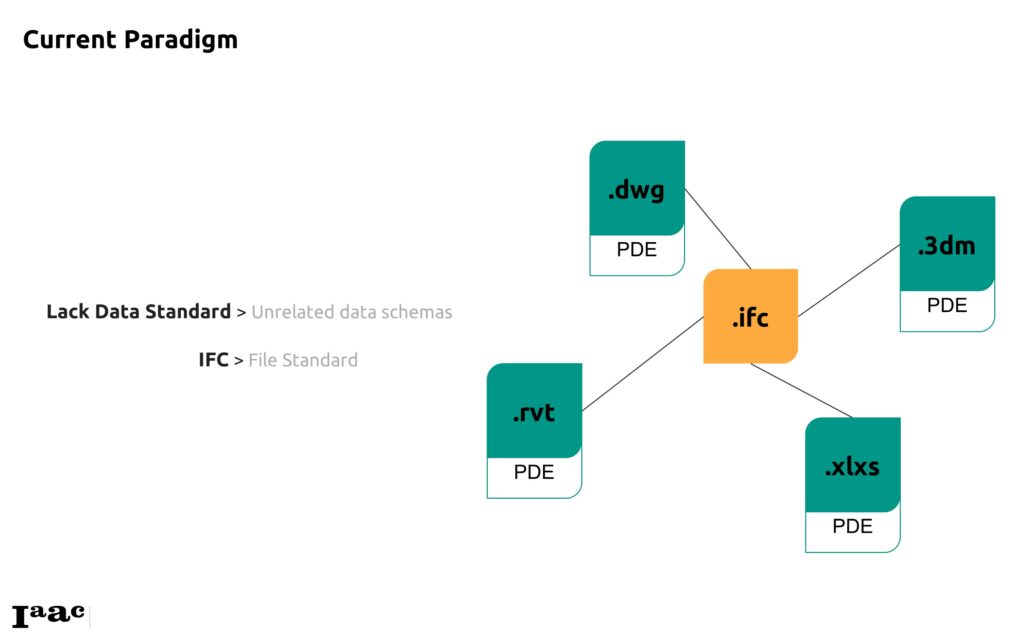
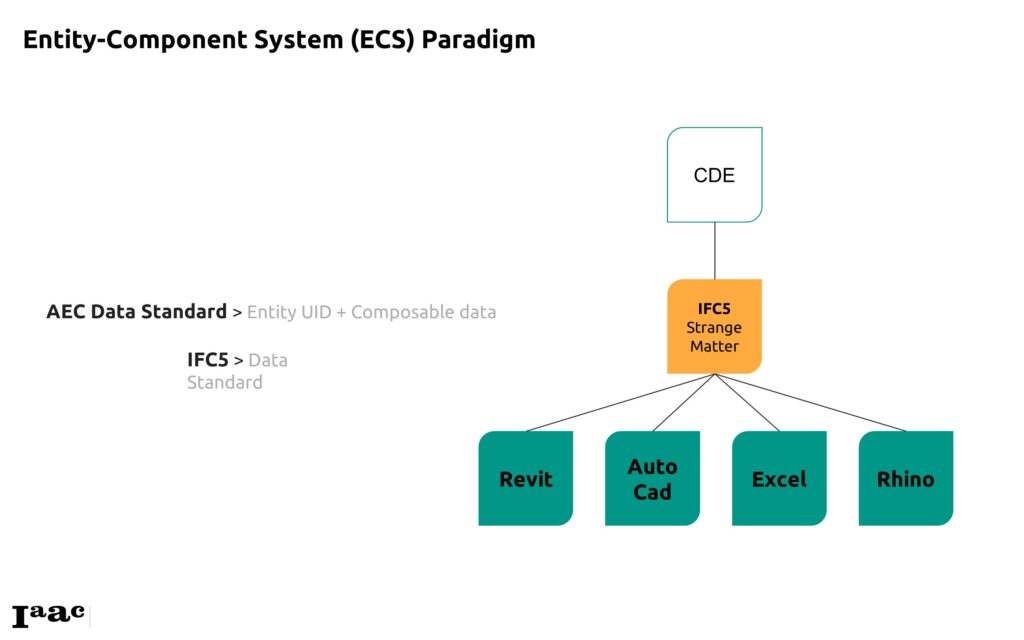
Podcast
With this background, we interviewed experts on data frameworks and interoperability. Our podcast is imagined as a mini-series where we interview multiple people on specific aspects of data frameworks.
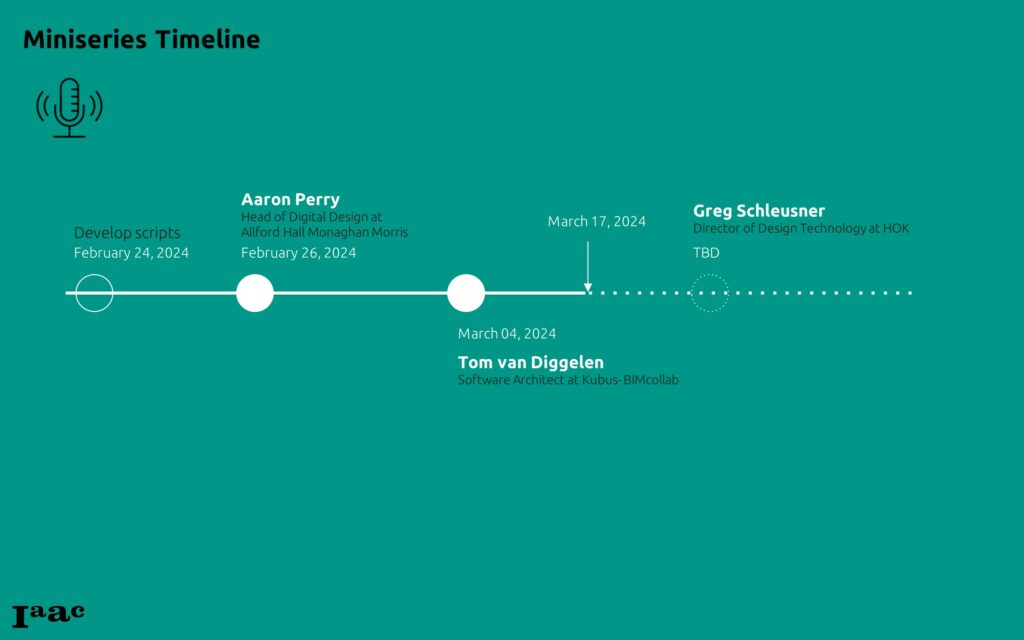
Episode 1: Aaron Perry
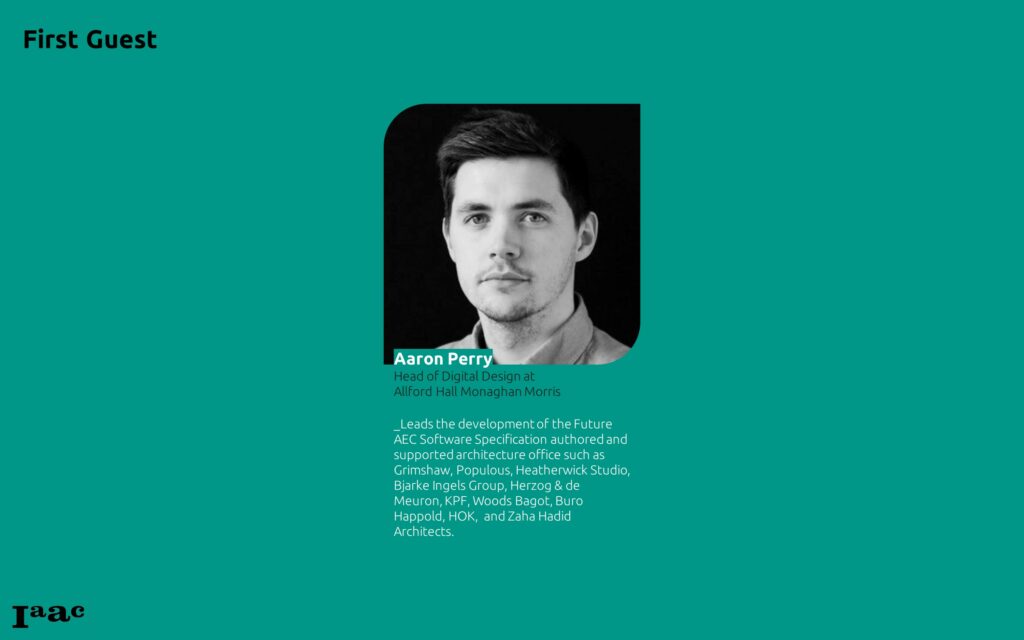
Our first guest was Aaron Perry, Head of Digital Design at Allford Hall Monaghan Morris. Aaron leads the development of the Future AEC Software Specification authored and supported architecture office such as Grimshaw, Populous, Heatherwick Studio, Bjarke Ingels Group, Herzog & de Meuron, KPF, Woods Bagot, Buro Happold, HOK, and Zaha Hadid Architects.
During our conversation, several key points were raised. First, open data frameworks will be implemented into IFC5 through ideas like StrangeMatter.
Strange Matter is an open protocol for working with distributed, heterogeneous data used before, during, and after all phases of design and construction of the built environment. It is format, vendor, and tool agnostic.4
This entity-component system allows for extensible ontologies and composable data. Professionals can more easily parse and extract the data that matters to their product or service and compose the entity’s components and chunks of information. The process is fluid and non-destructive.
This way of working will allow smaller companies to enter the AEC industry more meaningfully. We will see an increase in efficiency, innovation, and dissemination of expertise. Furthermore, for Artificial Intelligence (AI) to operate in the AEC industry, we must establish a reliable and flexible data framework to manage, share, and extract data. AI efforts will rely on better open data frameworks to train and deploy these relevant algorithms.
We discussed the origins of the Future AEC Software Specification platform, an effort spurred by an open letter by leading architecture firms calling for modernized specifications for digital tools and Building Information Modeling (BIM) in the AEC industry.
Lastly, Aaron suggested further study to understand the upcoming IFC5. IFC5 aims to be more of a data standard than a file standard. As architects, engineers, and computation designers, understanding these data frameworks and methods will be important for future adoption and success. We enjoyed our conversation with Aaron and appreciate his contribution to our industry.
Episode 2: Tom van Diggelen
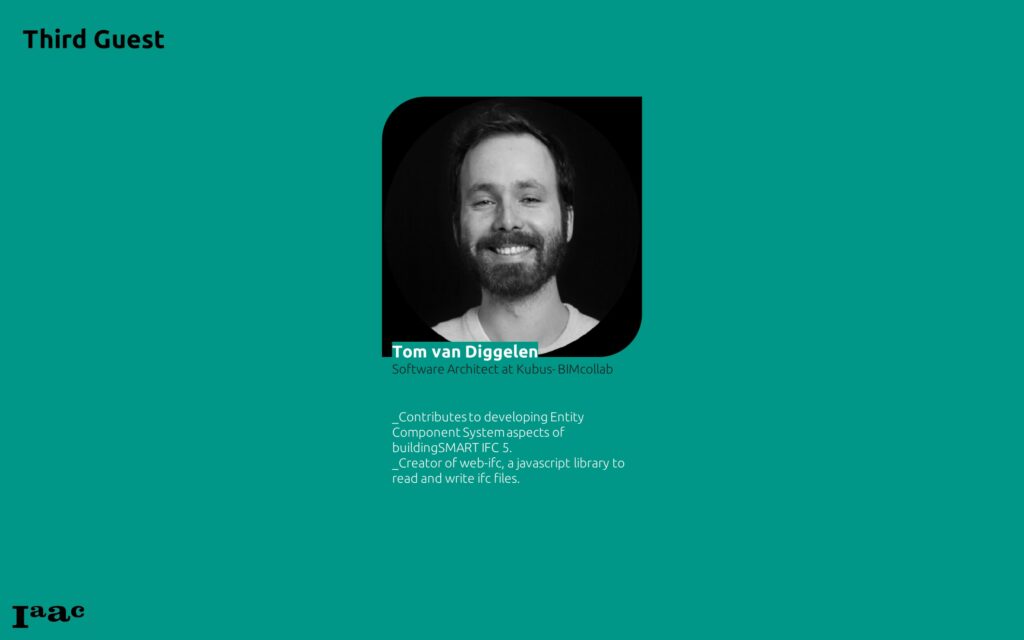
Our second guest was Tom van Diggelen, a software architect at Kubus, the company developing the brand BIMcollab. Tom actively contributes to contributes to open-source projects. He created Web-iIFC, the popular JavaScript library used by IFC.js and Speckle. Most recently, he has become part of the IFC5 development task force.
As a software architect, Tom provided value insight focused on ECS and Entity-Component Composition Graph (ECCG), a version of ECS that improves data reuse and nested data composition by sacrificing certain aspects of data-oriented design.5 Tom noted that IFC based on ECS would become a data-interchange standard and that software vendors such as AutoDesk, Trimble, and BimCollab are already moving towards ECS protocols. With IFC5, Tom explained, we could extend our current file-based system to register data, such as the one generated in clash detection analysis; data can be shared selectively, and there is no need to share entire files with irrelevant data. Finally, we can have version control over data: who and when something was created or changed.
This upcoming interoperability standard brought by IFC5, on the one hand, doesn’t require software vendors to rewrite their software or write new ones. It can be implemented in their existing offers. On the other hand, it will allow structuring all data generated by all parties in a project and saving it in a single place. This will be the base for training proper machine learning algorithms.
When we asked Tom what to pay attention to as an upcoming computational designer, he recommended learning about the spirit of web and software development. He told us IFC5 will work with similar tooling.
It should be noted that our delightful conversation lasted over an hour, which we edited into two separate 20-minute episodes! In the first part, we visited the fundamentals of IFC5: distributed data, ledger, and ECS.
Episode 3: Greg Schleusner
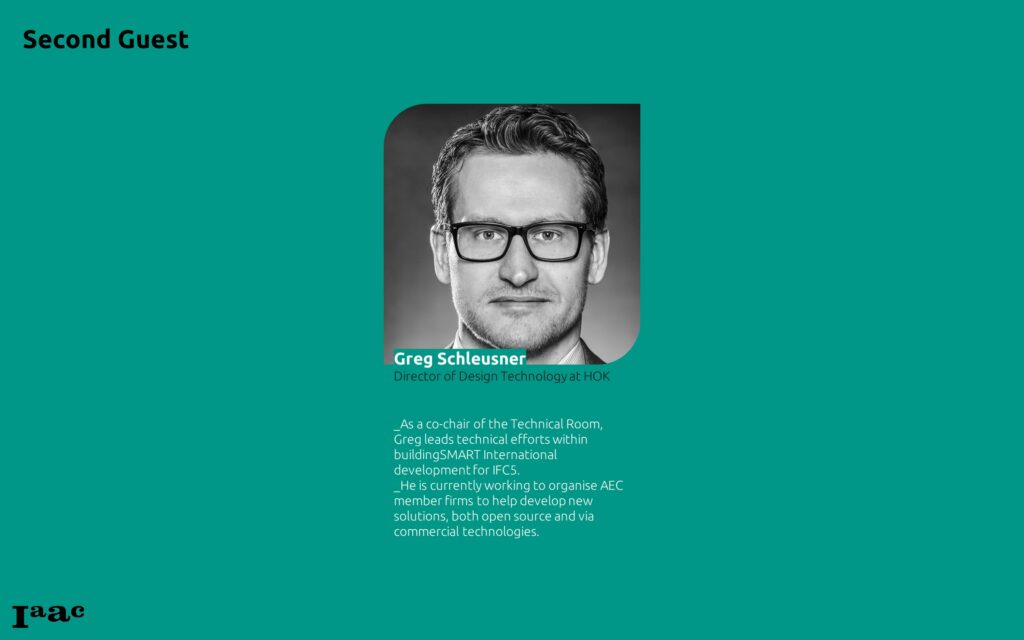
At the time of this blog posting, we hope to schedule a podcast interview with Greg Schleusner, Director of Design Technology at HOK. As a co-chair of the Technical Room, Greg leads technical efforts within BuildingSMART International development for IFC5. He is currently working to organize AEC member firms to help develop new solutions, both open source and via commercial technologies. Our conversation would be focused on StrangeMatter and IFC5.
As noted by Greg in lectures and online publications, rethinking our use of data frameworks provides better cross-platform collaboration, improves tool interaction, and frees designers from particular vendors. Borrowing video game and media industry ideas, AEC can improve data exchange and introduce a paradigm shift.
Conclusion
Podcasts offer a unique qualitative method of research. The conversations were captivating and filled with insights from experts in the field. First-hand information of the latest trends in BIM and AEC by the people doing the work is inspiring and challenging. We begin to imagine new possibilities and hurdles; podcasts offer a snapshot in time, capturing the latest developments and speculating on our shared future. As quickly as technology develops, it is refreshing to hear from these wonderful guests through personal conversations.
- https://aecmag.com/features/usd-and-the-aec-industry/ ↩︎
- Pixar Universal Scene Description USD | NVIDIA Developer ↩︎
- Entity Component System: An Introductory Guide | Simplilearn ↩︎
- GitHub – gschleusner1972/strange_matter: Building and Infrastructure Specific Meta Information Model ↩︎
- GitHub – tomvandig/eccg: Entity Component Composition Graph ↩︎

